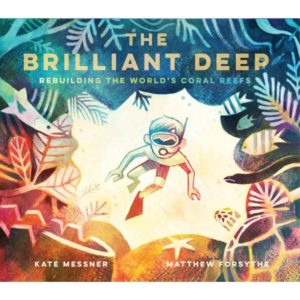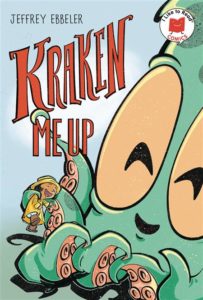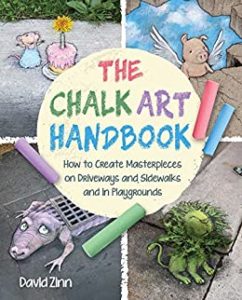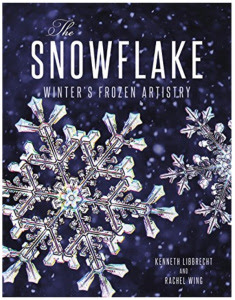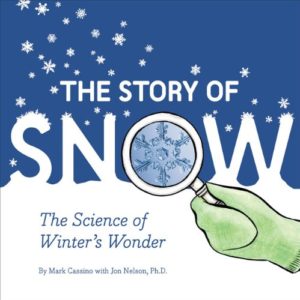The Last Days of the Dinosaurs: An Asteroid, Extinction, and the Beginning of Our World by Riley Black
It’s something we know without recalling perhaps when and where we learned it: The dinosaurs were taken out by an asteroid. (Well, the non-avian dinosaurs went extinct. The avian dinosaurs—birds—made it.) The most famous of the Earth’s mass extinction events (its fifth), it happened around 66 million years ago. Without it, this very day could very easily still be in the age of the dinosaurs.
In The Last Days of the Dinosaurs: An Asteroid, Extinction, and the Beginning of Our World, Riley Black not only takes us back to the impact event but also briskly carries us forward, from the first hour after the asteroid slammed into what is now known as the Yucatán Peninsula to one million years later. She shows us just what exactly the earth’s flora and fauna experienced, and would continue to experience, during this cataclysm. While other mass extinctions may have eliminated a higher percentage of the earth’s species, it took much longer (millions of years) to do so. The Cretaceous–Paleogene (K–Pg) extinction that Black details happened remarkably fast. It’s about as wild a ride as you can imagine: millions of years of evolution “undone in mere moments.”
Black notes that it’s important to understand the role the phenomenon known as contingency played. “Not all impacts are equal,” she says. The asteroid that smacked into Siberia about 35 million years ago was larger than the one from K-Pg. Yet it didn’t spur world-wide devastation. Impact angle and the type of rock receiving the space-punch mattered. So had the dinosaur-killing asteroid landed somewhere else on earth, conceivably the opportunities for mammals to climb atop the evolutionary ladder would not have materialized.
But it landed where it did. A “deadly crag,” it spanned about 7.5 miles across. And, traveling in excess of 44,000 mph, it was exceptionally fast. “If we were to stand at a single point and try to watch its passage, we would feel it rather than see it,” states Black. To make matters worse, it landed at a lethal 45-degree angle. There was instant vaporization where it hit coastal water. Tsunamis resulted, hundreds of feet high. Earthquakes spread. In present day Montana, dinosaurs there would have felt the impact in about fifteen minutes.
The earth, so violently shook, tossed up unfathomable amounts of dust and debris, darkening the sky. Billions of tons of sulfur and carbon dioxide were flung into the atmosphere. Then the debris started its descent, igniting fires. Any animal that could take shelter did of course. And if it could burrow, all the better. Climate change was almost immediate. Within the first day, fires engulfed the earth, a pure hellscape.
Already, just finding shelter above ground was proving futile. If an animal couldn’t dive into soil or water, it was in desperate straits. Temperatures climbed. This was a big problem for the gargantuan non-avian dinosaurs who were already prone to overheating. Black says it well and succinctly: “Evolution prepared them for the world of tomorrow, and perhaps the day after, but not for this.”
As the world burned, the debris created “a vast dome over the atmosphere.” Sunlight became scarce. This was the “impact winter,” a period of endless night. The days turned into years and then the acid rain started, slowly degrading the nutrients vegetation needs to grow.
One thousand years later the earth’s biodiversity was (surprise) greatly compromised, “shot through with gaps.” However, this created opportunities for the surviving organisms clinging to the happenstances they were dealt. Here’s one: Algae kept the oceans alive. Another one, going back to the first days after impact: The first primates could have perished (but did not of course) in the ubiquitous tree fires. (Black also notes that ferns, “a disaster taxon,” did very well during the recovery.)
One hundred thousand years after impact the earth was shaking off the coldness of winter, the forests growing higher. As we move to one million years, flowering plants proliferated, which in turn burgeoned insects. And as Black points out, such insects were a boon to primates, as they provided a source of nourishment.
Throughout the book, Black’s fascination with dinosaurs is palpable. She strikes me as a dinosaur-loving kid who grew up never having lost her wonder. And it’s as though she feels guilty they had to perish in order for her to exist and subsequently long for them. While most of us stop short of such longing, she does explain our collective intrigue of dinosaurs very well. We try to wrap our minds around the fact that such colossal creatures once ruled the earth and for such a long period of time. Whether gazing at their remains in a museum or watching a T-Rex redux chase down some poor human on screen, we can’t get enough. And to Black, it’s more than that. “Dinosaurs live again where our imagination touches bone, the consequences of impact creating a great, constantly unfolding puzzle in which the discovery of every new fossil feels like a victory. Against the odds, this creature was fossilized. And against the odds, we found it.”
Black soberly reminds us that, in the end, “extinction comes for all species,” the dinosaur fossils a “memento mori.” Dinosaurs were on earth for over 165 million years, yet they are long gone. And as we gaze up at their erected fossils, it’s natural to wonder what will become of us. Will we end by chance or by our own undoing? Either way, we know life, some form of life, will persist. Here’s Black, once again sharing her awe: “From the time life originated on our planet over 3.6 billion years ago, it has never been extinguished. Think about that for a moment.”
Find in Catalog

